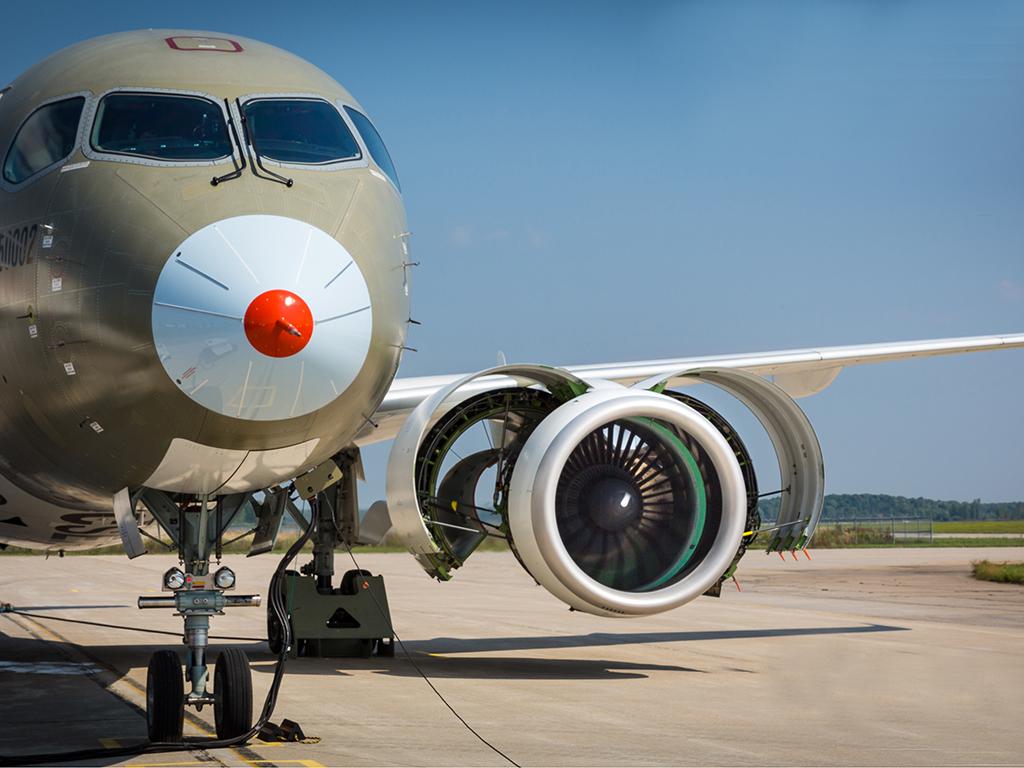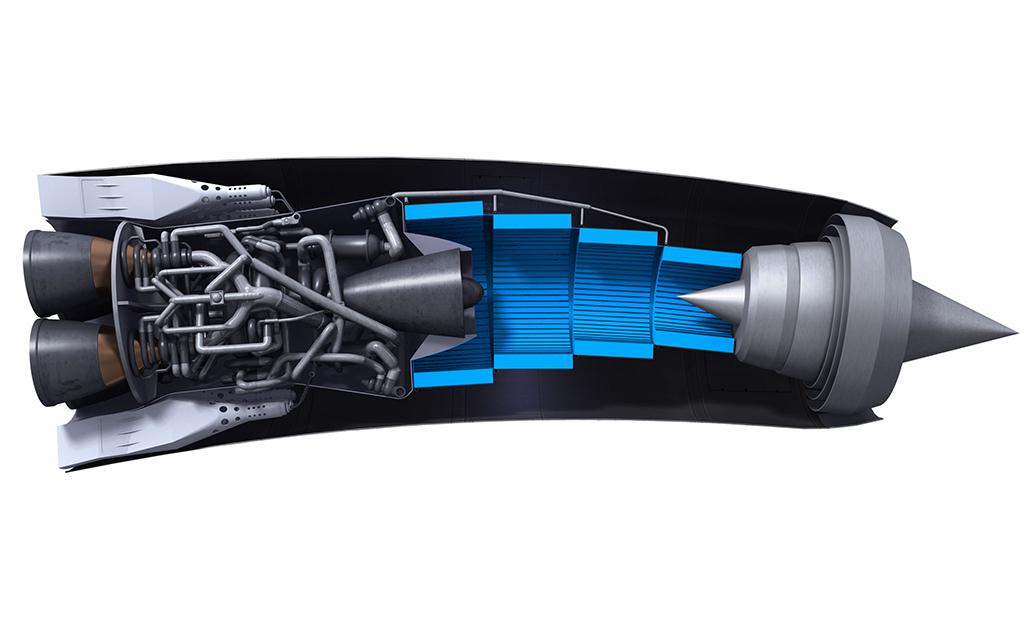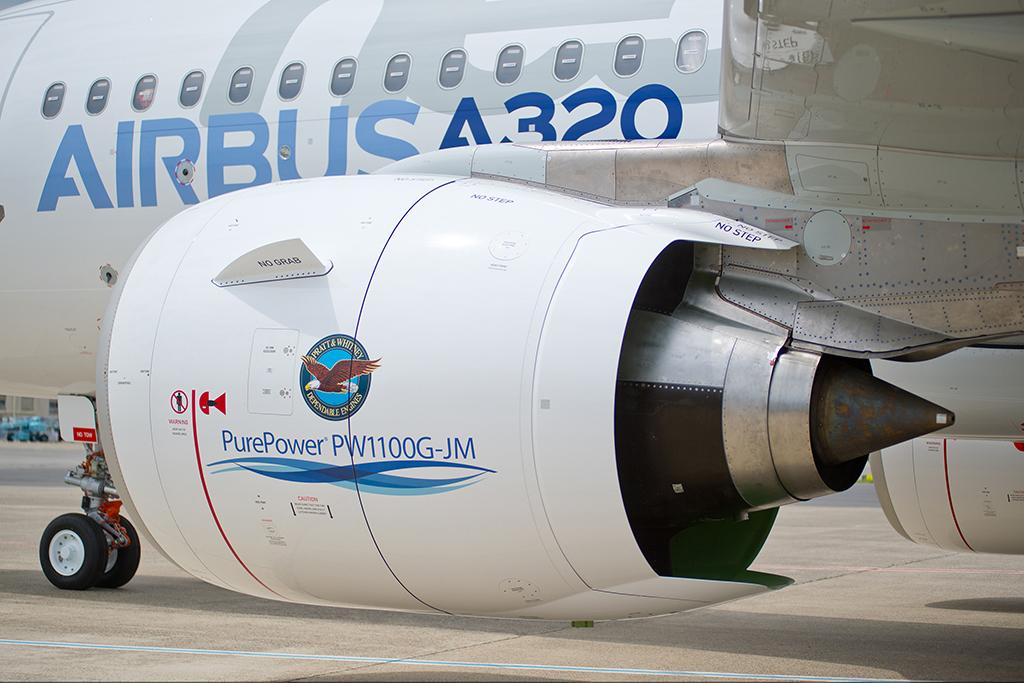
Trent Advances
Credit: Rolls-Royce

CSeries Grounded
An uncontained turbine failure of a Pratt & Whitney PW1500G geared turbofan at the end of May grounded Bombardier’s CSeries test fleet for 100 days. Flying resumed in September after the engine oil lubrication system was redesigned.
Credit: Bombardier
Credit: Bombardier

Reaction Engines Aims High
Reaction Engines in June revealed ambitious plans, backed by the U.K. government, to build and test a full-scale Block 1 ground demonstrator of its Sabre air-breathing rocket engine, to run by 2019.
Credit: Reaction Engines
Credit: Reaction Engines

F135 Hitch Keeps F-35 Away
Lockheed Martin F-35s were grounded in June and missed their international debut in the U.K. after a “hard rub” in the fan section of a Pratt & Whitney F135 engine caused a rotor failure. A “burn-in” process was developed to remove flying restrictions while a long-term fix is developed.
Credit: Lockheed Martin
Credit: Lockheed Martin

ScanEagle Matures
After 10 years of operations, Insitu announced it will replace the engine on its ScanEagle small long-endurance unmanned aircraft with a purposed-designed powerplant developed by Australia’s Orbital.
Credit: U.S. Navy
Credit: U.S. Navy

GTF Powers A320neo Aloft
Pratt & Whitney’s PW1100G geared turbofan (GTF) powered the Airbus A320neo in its September first flight. In 2015, the GTF is due to enter airline service on the A320neo and Bombardier CSeries and begin flight-testing on the Mitsubishi Regional Jet (MRJ).
Credit: Airbus
Credit: Airbus

Leap-1's Progress to Flight
CFM International’s Leap-1 engine flew for the first time in October, when the Leap-1C for the Comac C919 took to the air on GE’s Boeing 747 flying testbed. The Leap-1A (pictured) for the Airbus A320neo followed in December. The Leap-1B for the Boeing 737 MAX ran for the first time in June.
Credit: CFM International
Credit: CFM International

New Fan Powers Rolls' Plans
Flown on a Boeing 747 testbed in October, Rolls-Royce’s new composite-titanium fan blade is a key element of its next-generation Advance large turbofan and UltraFan ultra-high-bypass geared turbofan designs for the 2020s, unveiled in March.
Credit: Rolls-Royce
Credit: Rolls-Royce

Advent Sets Records
GE Aviation completed ground tests of an adaptive-fan combat engine demonstrator, with variable bypass ratio to maximize fuel efficiency while providing high thrust, achieving record combined compressor and turbine temperatures.
Credit: GE Aviation
Credit: GE Aviation

Green Helo Runs
Under Europe’s Clean Sky research program, Airbus Helicopters began ground tests of a diesel-cycle engine in an EC120 light helicopter, aiming for 30% lower fuel consumption and fewer emissions than a turbine engine.
Credit: Clean Sky Joint Undertaking
Credit: Clean Sky Joint Undertaking

Honda Produces HF120
U.S.-based Honda Aero delivered its first production HF120—developed jointly with General Electric—to Honda Aircraft in November, for the HondaJet, and has teamed with Sierra Industries to reengine Cessna CitationJets.
Credit: GE Honda Aero Engines
Credit: GE Honda Aero Engines

New U.S. Rocket Engine Boosted
In December, Congress gave the Pentagon $220 million to accelerate development of a U.S. rocket engine and end by 2019 its reliance on the Russian RD-180 to power United Launch Alliance’s workhorse Atlas V booster.
Credit: United Launch Alliance
Credit: United Launch Alliance
From engine troubles that kept key commercial and military aircraft test programs on the ground to the production debut of a new U.S. turbofan maker, here are some key events in the propulsion industry in 2014.
